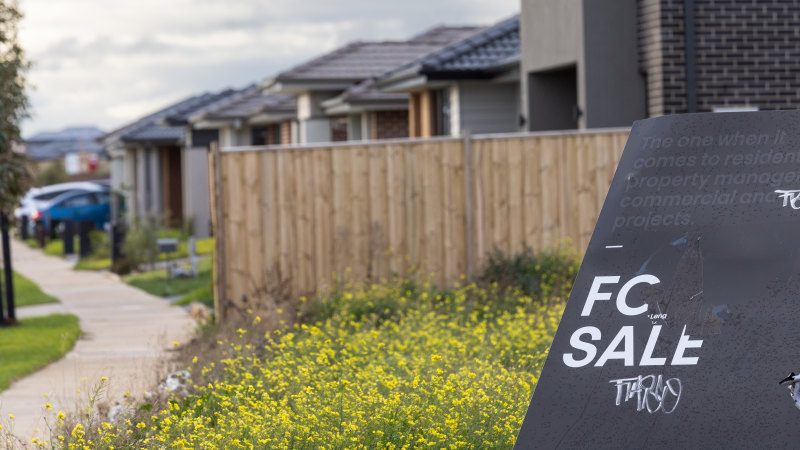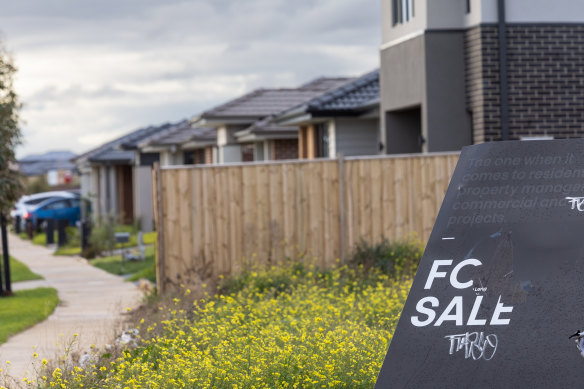Save articles for later
Add articles to your saved list and come back to them any time.
Close to one in three first home buyers across Australia in 2022-23 were helped by the federal government’s low-deposit scheme, a significant increase from one in seven in 2021-22.
The number of low-deposit guarantees issued was 39 per cent higher compared with the previous financial year.
Almost one in three first home buyers were helped by the low-deposit scheme last financial year. Credit: Jason South
Higher rising interest rates and rising property prices are prompting more first home buyers to use the scheme, and there has been an expansion in the number of places.
Since the First Home Guarantee opened in 2020, the Regional First Home Buyer Guarantee and the Family Home Guarantee were added. The New Home Guarantee is no longer available.
From July 1 this year the three guarantees became available to permanent residents, rather than just Australian citizens. The First Home Guarantee and Regional First Home Buyer Guarantee are now open to those who have previously owned property, as long as they have not owned property for at least 10 years.
The guarantees, which are administered by Housing Australia, an Australian government body, have salary limits for applicants and caps on purchase prices, depending on the location of the property.
They allow home buyers to pay a deposit of only 5 per cent, or 2 per cent for the Family Home Guarantee, which is designed to help single parents and legal guardians with dependants. The Family Home Guarantee is open to those who have owned a home, or who own a home, as long as they no longer do so by the time they settle on a purchase using the guarantee.
Housing Australia figures show medium- and high-density housing, such as units and town houses, are over-represented by scheme users.
This could be due to price caps – as apartments and town houses tend to be cheaper than houses – and more availability of units and town houses compared with houses.
While purchases of houses comprised about 65 per cent of all guarantees in 2022-23, that was lower than the 71 per cent national average over the same period.
Buyers in the Liverpool area of south-western Sydney received the largest number of guarantees in Greater Sydney.
For Greater Melbourne, the largest uptake was in the Craigieburn area in the city’s north.
The recipients of more than 9700 guaranteed loans – about 12 per cent of guarantees issued – have built equity in their property of at least 20 per cent and no longer have the guarantee.
Rising property prices, higher rents and the higher cost of living make coming up with the deposit difficult for many would-be first-time buyers.
Surging immigration is contributing to one of the tightest rental markets on record. Figures from SQM Research show the national residential property rental vacancy rate was 1.1 per cent in September.
Sydney’s vacancy rate was 1.3 per cent and Melbourne’s 1.2 per cent in September. Asking rents in Sydney during the year to October 12 rose 17.4 per cent, and 17.8 per cent in Melbourne, SQM figures show.
The fundamentals of supply and demand for housing suggest little prospect for relief for those struggling to get onto the property ladder.
Informed Decisions, a consultancy on demographic, housing and economic trends, said it expects Melbourne, now home to 5 million residents, to have a population of 6.6 million by 2041. It says the extra 1.6 million Melburnians will need 723,000 dwellings.
Sydney’s population, now almost 5.3 million, is expected to reach 6.4 million by 2041, with the city needing 582,000 dwellings.
- Advice given in this article is general in nature and is not intended to influence readers’ decisions about investing or financial products. They should always seek their own professional advice that takes into account their own personal circumstances before making any financial decisions.
Expert tips on how to save, invest and make the most of your money delivered to your inbox every Sunday. Sign up for our Real Money newsletter.
Most Viewed in Money
From our partners
Source: Read Full Article

